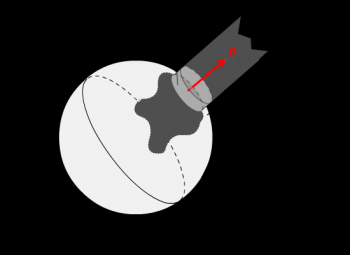An electric charge is the physical property of matter that causes it to experience a force when closed to other electrically charged matter. There are two types of electric charges, positive and negative. Positively charged substances are repelled from other positively charged substances, but are attracted to negatively charged substances. Similarly, negatively charged substances are repelled from negative and attracted to positive. A substance will be negatively charged if it has an excess of electrons and will otherwise by positively charged or uncharged. The SI unit for electric charge is a coulomb (C).
The electric charge is a fundamental conserved property of some subatomic particle, which determines their electromagnetic interaction. Electrically charged matter is influenced by and will produce electromagnetic fields. This interaction between a moving charge and an electromagnetic field is the source of the electromagnetic force. The electromagnetic force is one of the four fundamental forces.
The charge of an electron is -1 and the charge of a proton is +1. Coulomb’s law quantifies the electrostatic force between two particles by asserting that the force is proportional to the product of their charges and inversely proportional to the square of the distance between them.
The charge of an antiparticle is equal to the corresponding particle but with an opposite sign. Quarks have fractional charges of either -1/3 or +2/3. Free standing quarks have never been observed.
An ion is an atom which has lost at least one electron. This would give it a net positive charge (cation) or has grained at least one electron, giving it a net negative charge (anion). Monatomic ions are formed from single atoms. Polyatomic ions are formed from two or more atoms that have bonded together. Each case yields an ion with a positive or negative net charge.
© BrainMass Inc. brainmass.com April 19, 2024, 4:47 pm ad1c9bdddf
